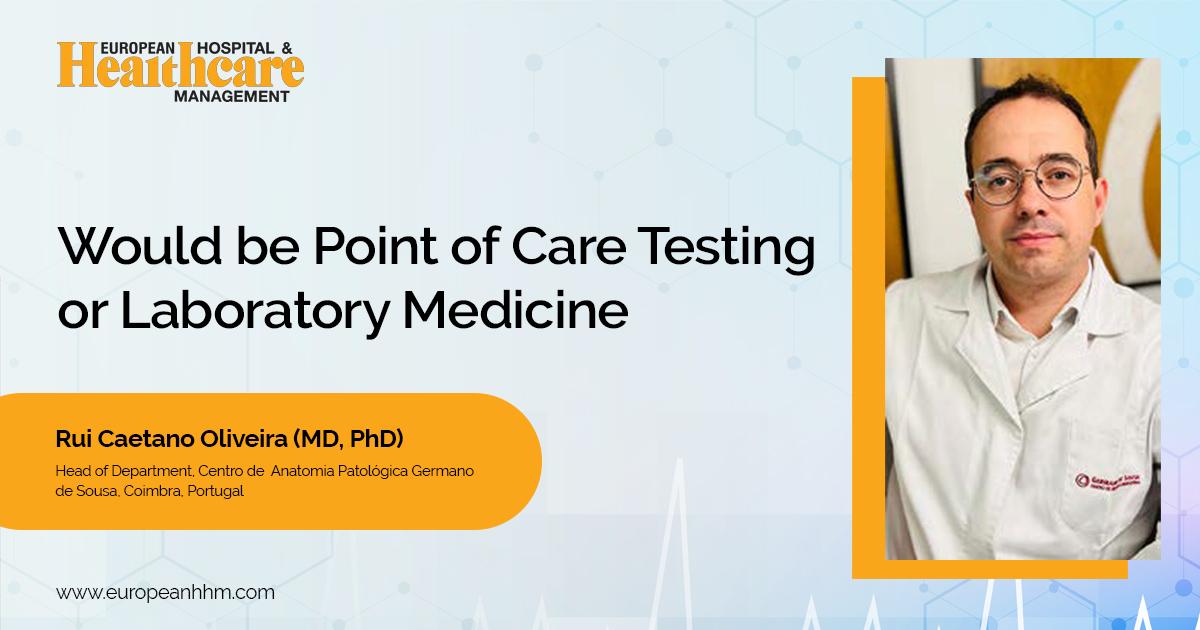Notifications

4 minutes, 14 seconds
-124 Views 0 Comments 0 Likes 0 Reviews

Author: Rui Caetano Oliveira (MD, PhD), Head of Department, Centro de Anatomia Patológica Germano de Sousa, Coimbra, Portugal
We can go for the evolution of Pathology, from almost unknown to a cornerstone in diagnosis, with implications in targeted therapy and clinical trials. Pathology nowadays has to integrate morphology, immunohistochemistry (new generation) and genetic sequenciation. We can also have some questions on the impact of AI and pathology, both in the diagnostic and laboratory process, since the demand is higher every day and everyone wants it faster.
1. Dr. Oliveira, the field of pathology has evolved significantly over the years. Could you outline the major milestones in the evolution of pathology, particularly in the integration of morphology, immunohistochemistry, and genetic sequencing?
2. How do you see the role of pathology today in providing a more precise and personalized approach to diagnosis and targeted therapy?
3. In your view, how has the growing demand for faster results influenced the pathology field, and how have laboratories adapted to meet these demands?
4. Point of Care Testing (POCT) is increasingly popular due to its ability to deliver quick results. Do you think POCT will eventually replace traditional laboratory testing, or do you foresee it as a complementary tool?
5. What are some of the challenges involved in integrating advanced techniques, like genetic sequencing and immunohistochemistry, into the routine diagnostic workflow, especially in a high-volume setting?
6. Given the advancements in artificial intelligence (AI) in medical diagnostics, how do you envision its role in pathology? Do you think AI will significantly impact diagnostic accuracy and efficiency?
7. How can AI algorithms assist pathologists in dealing with large datasets, especially in the context of genetic sequencing and complex immunohistochemical analyses?
8. What impact do you believe AI will have on the future of laboratory processes, particularly in automating repetitive tasks and improving turnaround time?
9. There are concerns about the potential for AI to replace pathologists. What are your thoughts on this, and how do you think AI can be integrated in a way that complements, rather than replaces, the role of the pathologist?
10. With the growing importance of molecular diagnostics, how do you see the future of pathology departments in terms of integrating new technologies and staying ahead in the field?
11. How do you think the current regulatory environment is adapting to the rapid pace of innovation in the pathology field? Are there sufficient measures in place to ensure accuracy and reliability?
12. In clinical trials, pathology plays a key role in assessing treatment efficacy. How has the integration of advanced diagnostic tools impacted clinical trial designs, particularly in oncology and personalized medicine?
13. The demand for real-time diagnostic data is increasing. What measures can be taken to ensure that laboratories maintain the highest standards of quality while meeting these demands?
14. Finally, how do you see the future of pathology and laboratory medicine evolving in the next 10-15 years? What innovations or trends are you most excited about, and what challenges do you anticipate?
Click here for the complete Interview: Would be Point of Care Testing or Laboratory Medicine
medical Healthcare Point of Care Testing POCT Laboratory Medicine

